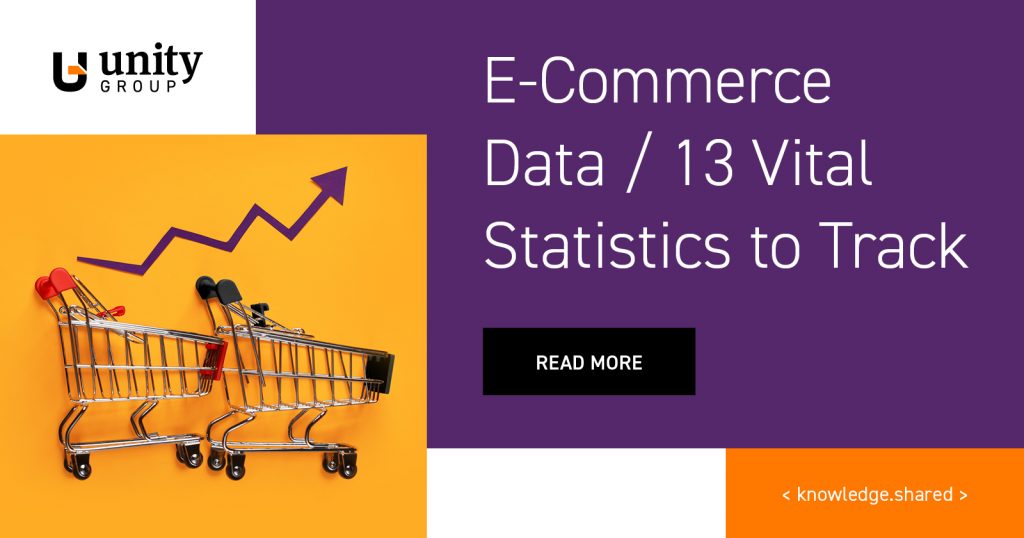Black Friday / A Practical Checklist for E-Commerce Owners
Everyone gets stressed on Black Friday but, between us, shoppers are the ones that have it easy 😉 Behind the scenes, entire IT, marketing and customer support teams need to prepare a solid strategy.
And that’s not even mentioning warehouse, logistics or the subsequent challenge of order fulfilment…
Black Friday (and Cyber Monday) are some of the biggest revenue sources for e-commerce companies. What once was a simple means to clear stock has now become a shopping period on-par with the following holiday season. A reckless approach here isn’t an option in today’s e-commerce sphere.
So, we put our heads together and came up with (what we hope) is a pretty useful checklist for getting your ducks in a row…
Start with a Retro
Before any big project, you start by measuring where you’re at. This is the benchmark from which to improve from. When it comes to Black Friday and Cyber Monday, we can look at quite a few areas:
Take the traffic and sales results from last year and set these as the initial goals. You want to be better than that, so these should be our minimum expectations.
However, you should also find the areas that didn’t perform as expected. This can include product categories that were less popular, areas where the website failed to perform well or any other indication for potential improvement.
When? As early as possible. Tomorrow, ideally! The sooner you’re able to do this, the sooner you can progress. After all, improvements require a benchmark, and problems can’t be solved if they’re not first identified. Even when they are, changes and improvements don’t happen overnight.
Consider All Channels
Today’s e-commerce is more than just a website. We’ve covered this before in both the multiexperience approach and using headless commerce architecture to enable an omnichannel strategy.
Every business is a little different, but your primary channels are:
- Your website – obviously!
- Mobile – whether ensuring the mobile site is responsive, or having a dedicated app, e-commerce has to be mobile-friendly.
- Marketplaces – if you sell products through other marketplaces, you should consider updating them and ensuring everything is working as intended.
- Brick and mortar shops using POS systems – and often omnichannel features with your e-commerce platform
You might also have multiple variations of the above – if, for example, you operate in numerous regions, it goes without saying (but let’s say it anyway 😉 ) that you need to check and optimize each and every one of them. We can’t think of a lucrative market that doesn’t partake in Black Friday.
When? This should be done as part of the previously-mentioned retros or shortly afterwards. Knowing where you stand in each area is essential for effective benchmarking – and thus, making improvements.

Identify the Biggest Risks
We can’t promise that everything will be perfect. Even the leading cloud platforms only promise 99.99999…% efficiency, and even this would require an asterisk. That’s why it’s essential to identify the worst case scenarios now, so that we can better prepare for them in the next few steps (and months).
From our experience, this includes:
- The website goes down. That’s the biggest. Ideally, you should be on a public cloud with a well-supported infrastructure. This should include multiple servers and redundancies, such as alternative hosting locations.
- Performance drops. Just like above, we want to be able to scale and adapt our infrastructure to ensure latency doesn’t kick in. Even a few seconds is all it takes for users to go elsewhere.
- Information desync. What if a product is sold out but the website doesn’t update? Taking orders for something you can’t provide is a genuine risk. You should prepare to both remove this issue in the first place, and have a quick, effective response for if it does happen.
- Problems in order management. Logistic operations are a key lynchpin in any e-commerce. Likely, you’re relying on other providers and services. That lack of direct control is a clear area for occasional surprises.
- Inability to purchase. A broken integration or bug in the payment system can ensure that orders simply can’t be made. Active monitoring is vital.
- The unexpected! Let’s be honest, we can’t list every possible surprise. Ensuring someone from every department is available will go a great way to being able to adapt on the fly.
Knowing and documenting these potential scenarios is essential. It’ll ensure you have go-to strategies in case any of them come to pass.
When? After benchmarking and checking all channels, this should be next. Ideally, this should happen a few months before Black Friday, to give yourself time to then work on each identified risk and prepare a mitigation and/or resolution strategy.
Preparing for Increased Demand
Traffic is the biggest concern everyone has with Black Friday. More people use to leads to slower performance, which inevitably leads to less people.
Nowadays, we can solve that with serverless technology (it’s much faster than rightsizing, especially when frequent activity ensures cold starts aren’t even an issue, either!), so we can look to the next problems.
- Can inventory handle big demands quickly enough?
- When there are 200 products left and 100 purchases happen in a few minutes, how quickly can we advertise that something is almost sold out?
- More so, how quickly can we mark items that are no longer available? The answer should be in microseconds.
- If we have third party processes, such as logistics, can these keep up?
When? After benchmarking. We need to push the limits to see where the additional work lies. This can include testing on virtual servers (but using the same infrastructure), on-site servers and even additional back-up servers.
Inspecting the Checkout Process
The goal of Black Friday is, of course, to sell a big pile of stuff. In order to do that, we need to ensure the checkout process is robust. Step-by-step, we need to consider the following:
- Can customers move to checkout, with all items in their cart included without any issues?
- Is the information about costs accurate and clear (including vat, taxes etc, calculated)?
- Do other options such as different delivery services, delivery time, payment options, promotional codes, and other factors (time estimates) are accurate and work flawlessly?
- If your business offers the likes of remote pick-up points, can customers easily and quickly choose a location that suits them?
- If not, are they still able to update their delivery address to their choosing?
- Are all available payment options working as intended and selectable by customers?
- Are orders processed properly in the backend, and are customers notified of an order being successful?
It’s also worth considering these processes at scale. How scalable is your integration with other third party services? When do things slow down?
When? The checkout process is always vital, so this should be done as soon as possible. After benchmarking and assessing previous results, this should be the next step – a more detailed look at the current processes.
Get Support in Place
At the end of the day, we can only automate so much. To truly prepare for the unexpected and be able to handle anything, we should ensure human expertise are available 24/7. Black Friday is not the day to limit your customer service to typical business hours.
This also goes for any and all areas of your company. Something goes wrong on the backend, or the server needs to be switched to a new location? Having someone active and at their station will cover all bases – especially when we think back to all the risk scenarios identified earlier.
Build a fast response team that is able to bring in some workarounds before the root cause of the problem(s) is even found. Most often, these are SysOps/DevOps teams.
When? NOW. You’re asking every department to have some sort of representation, and that means asking people to work some questionably unsociable hours (and you’re also asking them to give up their own Black Friday) so be understanding!
Sales & Marketing, too!
We’re not going to go into too much detail here, as our forte is more in technical competencies, but sales and marketing obviously play a huge role in these events. However, a big part of Black Friday is the build up to it. Consumers need to know which products are on offer; they need to know you are the one providing this opportunity, so you are the first store they visit.
We can split this into two broad halves:
- Existing customers should be tempted with direct marketing (with the right data, you should know what they like) and optimal offers. Strong loyalty incentives will ensure they stay with you, rather than get distracted by competitors.
- Potential customers should also have their own dedicated marketing initiatives to showcase the best offers or the biggest items in your promotions. What’s more, they should be incentivised with loyalty points during purchases, too, to ensure they come back throughout the year.
In both cases, a well planned customer journey will help – as will A/B testing. The latter, done early enough, can help measure where the best interests lie, and which methods or techniques prove the most effective. This goes for all marketing activities – what’s more, doing them early on means we can set up automation to take care of the work as we move closer to the day itself.
When? We say “as soon as possible” a lot but… yeah. When your technical teams are benchmarking, your marketing should be looking to identify audiences and basic prep work (branding, graphics etc). 2-3 months before Black Friday, everyone should know what products (even if it’s categories) well be discounted the most. With this, marketing can start running the necessary campaigns to make the right buzz.
Analytics
Information is only good if you do something with it. Any successful e-commerce should be looking to have both the tools for collecting data and generating insights from it.
- Essential traffic reporting. Tools like Google Analytics will help show the user flow – where people come from, where they go and where the highest interest/activity lies – while tools like Hotjar will show how users interact with specific pages. Both will be vital for learning from Black Friday (and useful for next year’s benchmarking…)
- Integration with marketing campaigns will also prove useful. Whether you’re using tracking pixels or UTMs, knowing which campaigns – and which audiences – have the biggest impact will prove invaluable.
- If you have a more advanced, customizable dashboard to connect such website data with customer data, like Power BI, you can better understand the information coming in.
- This can also prove useful for future automation and Machine Learning – tools that can identify trends through large data (that really, us humans struggle with 😉 )
When? Most e-commerce stores already have some basic analytics, such as Google Analytics, in place. However, the question is what to do with this data? If it’s in place, take some time a month or so before the big day to train teams and agree what the actual data strategy is.

For more advanced tools, such as Power BI, you may need a few months to implement the technology, add the data channels and then gather the benchmarking needed to actually measure BF’s success.
And the really advanced stuff, like Machine Learning and recommendation engines, takes time. We’d wager at least a few months to do it right. If it’s rushed, it won’t be effective (and ML models need time to ‘train’).
Take A Deep Breath
Laid out like this, it seems like a lot. However, the proper planning and coordination in the months leading up will ensure the most calm and peaceful approach. We can’t promise you a headache or panic free experience, however, as early benchmarking and testing will of course reveal areas in need of improvement.
Yet, it’s worth to focus on the positives: that this approach gives you ample time to resolve them, find support if needed or otherwise make everything optimized and ready weeks in advance.








